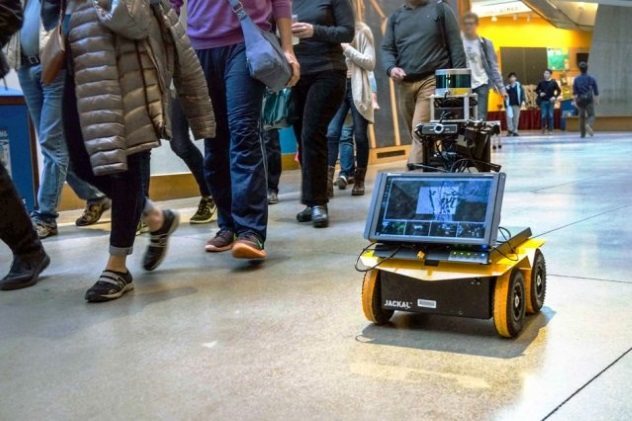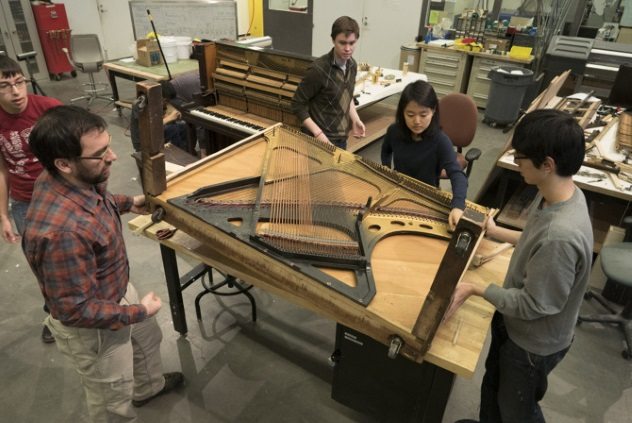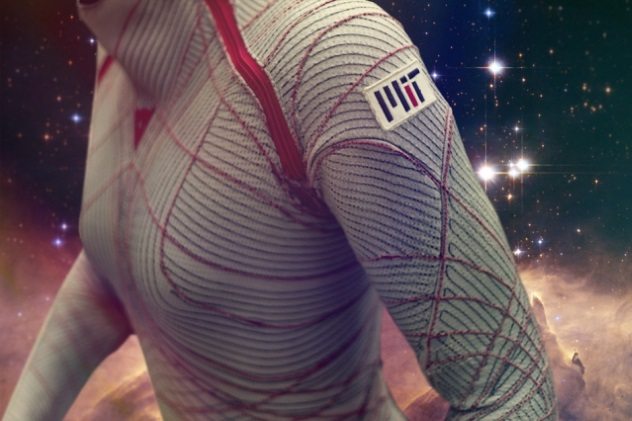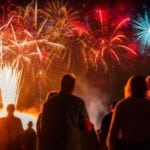 Weird Stuff
Weird Stuff  Weird Stuff
Weird Stuff  Miscellaneous
Miscellaneous Top 10 Things Crypto Was Supposed to Change & What Actually Did
 History
History 10 Huge Historical Events That Happened on Christmas Eve
 Music
Music 10 Surprising Origin Stories of Your Favorite Holiday Songs
 History
History 10 Less Than Jolly Events That Occurred on December 25
 Weird Stuff
Weird Stuff 10 Funny Ways That Researchers Overthink Christmas
 Politics
Politics 10 Political Scandals That Sent Crowds Into the Streets
 Weird Stuff
Weird Stuff Ten Bizarre Facts About The Doge Meme
 Our World
Our World 10 Ways Your Christmas Tree Is More Lit Than You Think
 Movies and TV
Movies and TV The 10 Coolest Stars to Set Sail on The Love Boat
 Weird Stuff
Weird Stuff 10 Fascinating Facts You Might Not Know About Snow
 Miscellaneous
Miscellaneous Top 10 Things Crypto Was Supposed to Change & What Actually Did
 History
History 10 Huge Historical Events That Happened on Christmas Eve
Who's Behind Listverse?

Jamie Frater
Head Editor
Jamie founded Listverse due to an insatiable desire to share fascinating, obscure, and bizarre facts. He has been a guest speaker on numerous national radio and television stations and is a five time published author.
More About Us Music
Music 10 Surprising Origin Stories of Your Favorite Holiday Songs
 History
History 10 Less Than Jolly Events That Occurred on December 25
 Weird Stuff
Weird Stuff 10 Funny Ways That Researchers Overthink Christmas
 Politics
Politics 10 Political Scandals That Sent Crowds Into the Streets
 Weird Stuff
Weird Stuff Ten Bizarre Facts About The Doge Meme
 Our World
Our World 10 Ways Your Christmas Tree Is More Lit Than You Think
 Movies and TV
Movies and TV The 10 Coolest Stars to Set Sail on The Love Boat
10 Epic Inventions Coming To Life At MIT
The future is now. We live in a time of amazing technological advances, and just when we thought technology couldn’t get any more innovative, the Massachusetts Institute of Technology (aka MIT) premieres more of their signature incredible inventions.
From robots that can learn and behave just like people to major steps in areas that impact our lives, there is always something exciting happening on and around campus. And just when we start getting used to these incredible new inventions, even more continue to crop up on the scene. All of these recent inventions will ignite your imagination even as they make the world a better place.
10 A Robot That Obeys Rules Of Courtesy

If you’ve ever had to walk in an extremely crowded place, you understand that there are subtle rules that keep everyone in that situation sane. There’s nothing worse than a person who disrupts the flow of human traffic and makes everyone late. This new robot not only actually knows how to stay to the right in a crowded hallway, but it also knows many other slight social nuances.[1]
The researchers were able to train the robot to think like a person by teaching it four important skills: knowing the space it takes up and its location (called localization), familiarizing itself with what is around it (called perception), choosing the best path forward (referred to as motion planning), and being able to complete the necessary movement forward on the path that it chooses (also known as control).
The robot can gently pass a slower walker, allow someone else to pass by, and even completely avoid collisions. Perhaps it won’t be long until robots are moving among us and hardly drawing any attention!
9 A Robotic Brain Spy

This robotic arm and automated computer algorithm allows scientists to spy on neurons in the brain without manually “patch clamping.” In the past, doctors needed to reach right into a person’s brain using a pipette to get the same data that they can now get in a noninvasive fashion.
This invention gathers info about tiny electrical synapses in the brain and can help doctors and scientists learn all kinds of information about what’s going on inside a patient’s noggin. Not only that, but it can perform this delicate procedure safely and reliably. The implications for improvement in mental health technology, medical treatments, and research are enormous.[2]
8 A Possible Key To Curing Alzheimer’s

Alzheimer’s disease impacts 5.5 million families every single year. It is not only devastating to the patient, who suffers from the effects of diminished brain function, but it is extremely hard on their loved ones.
With this latest advancement, researchers have actually been able to slow down the signs of memory loss, an unprecedented breakthrough. They were able to narrow the disease down to a specific enzyme, HDAC2, that when blocked, improves cognitive function.[3] Could a cure be right around the corner?
7 A Giant Data Storage System Called A Flash Cache

That’s right—using the power of regular flash memory, researchers can store tons of data with more efficiency than ever. In addition, these nontraditional storage units are much cheaper than the more commonly used DRAM (dynamic random-access memory).
While the access time is slower for flash memory, the new system uses 20 times less energy and has 100 times the storage density of DRAM.[4]
6 A Unique Blanket To Help Refugees

The number of displaced people in the world (aka refugees), exceeded 60 million for the first time ever in recent years. Even worse, 24 people become displaced just about every minute. The blanket invented by researchers at MIT is meant to provide a little bit of support for those in need. It is water-resistant for rain and flood zones. It is also durable, strong, and incredibly warm. Not only that, but the materials dry quickly and can transform into backpacks or even sleeping bags.[5]
The blanket is also double-sided, superlight, and antimicrobial. The handles that are used to carry it and that also make up the backpack are made of very strong nylon. There is a pocket that allows it to be wrapped up and secured with Velcro. The toasty unit also includes a strip that lights up in the dark. In spite of all of the state-of-the-art features of this blanket, it is relatively inexpensive to create.
5 Heat-Spying Automobiles

These cars drive around with radiometric cameras strapped to their roofs. Those, along with near-infrared cameras, are able to pick up heat images. In addition, the cars use LiDAR to capture the shape of buildings that are being examined. In the process, these cars can quickly assess whether homes are losing heat with simple thermal imaging. This technology also works on businesses and other infrastructure. The images produced by these mobile heat-seekers are astonishing.[6]
Once all of the data is collected, software gathers the information, combines the images, and removes unnecessary details. In just a single day, more than three terabytes of data can be accessed. In addition, the inventors were able to tackle a huge hurdle to the technology. The necessary cameras normally cost a whopping $40,000. They were able to replace these with a new, low-cost camera that only cost $1,000. The cameras can be easily removed and reattached to avoid damage. Still, a lot of changes were needed to make the cameras work in various temperatures and to keep the GPS accurate in the elements.
4 A Totally Unassuming Robot Servant

This anthropomorphic giant robot will do just about anything you tell it to do, within reason of course! It can remember information that you told it before and even do simple tasks, like handing you a box of Cheez-Its. The robot combines declarative memory and semantic memory, meaning it can remember very general information as well as very specific events and memories. This allows it to learn new skills and complete harder and harder tasks over time.[7]
The future of intelligent robots and interactive AI is definitely here and has been for a while. Pretty soon you may be relying on digital personalities to assist you in all of your everyday tasks!
3 Origami Robots
They are equally as adorable as they are useful. Designed to mirror the ancient art of Japanese paper-folding, the tiny robots can have a wide range of beautiful shapes that you choose yourself.[8]
In traditional origami, artists create spectacular and intricate designs using only folding. They never incorporate glue, cutting, pasting, or drawing on the original sheet of paper. The beauty of the art is the remarkable change that can take place to a single sheet of paper if you apply your imagination.
The miniature origami robots can do everything from stepping, walking, and driving. Eventually, they will even be able to fly.
2 Metapianos

Researchers took apart and completely reassembled two old pianos into unique and strange musical experiences. A number of people were invited to participate in the project. They came from a wide variety of backgrounds and combined their various skills to create two incredibly interesting new inventions.[9]
The first invention rearranged the many intricate parts of the piano into a brand new musical instrument capable of performing electroacoustic feedback, a purposeful sound loop to assist musicians. On top of its general helpfulness, it also just sounds really cool.
The second invention was a complex, intricate, musical pinball machine. Not the kind of thing you see every day!
1 An Extremely Fashionable Space Suit

This suit is not only functional and optimized for safety, speed, and flexibility, but it looks incredibly cool and futuristic.
Believe it or not, it’s very difficult to design something as delicate as a space suit on Earth. It’s impossible to perfectly replicate the conditions of space and perform your tests. Scientists have gone to great measures to check out the specifications of their experiments, from submerging test subjects underwater to launching suited-up teddy bears far out into space.
The design for the suit originated with research about how best to equip people traveling to Mars. The suit is much easier to move around in than the gas-filled suits of the past. It is made of elastic fabric that can handle all of the extreme situations of space travel. Even the tiniest tear in the older suits could endanger the astronauts wearing them. The new and improved space suit manages to withstand much more damage.
While the ultimate goal is space travel, the researchers are using technology from this invention to create other improvements in various fields. For instance, the suit may be used to help children with various illnesses, from brain damage to cerebral palsy. It could also help people who have suffered from a stroke or others who could use the assisted mobility of the super-sleek space suit outfitted with actuators and sensors to help them move.
Another amazing aspect of the suit is that it is created individually for each wearer. The person who eventually dons the suit will be scanned with lasers for an incredibly custom fit. The suit is expanded before it’s worn, and then the wearer links up to a power source and the suit essentially shrinks to fit their body perfectly.
It took a very special material to get this exactly right. There are plenty of shape-changing materials out there, but the best fit was a nickel-titanium shape-memory alloy. The alloy is wound into tight coils. These coils expand under heat to ultimately stretch into new and varying shapes.
It wasn’t easy getting the thin fibers into coil shapes, so the researchers borrowed a similar technique to others who had created an autonomous and friendly robotic worm in the past. The coils can actually be “taught” that they need to go back to a specific shape whenever the right temperature is reached. The metal is sort of like a bunch of carefully wound paper clips. The coils need to reach about 450 degrees Celsius (842 °F) for the original shape, and then they can be reshaped at room temperature. Once they reach a temperature of about 60 degrees Celsius (140 °F), they spring right back into place. That is all the flexibility that a highly trained astronaut needs to manipulate the suit to the shapes that he or she needs, and then the result is an exceptionally versatile space suit that allows for maximum freedom of movement.[10]
Katie Allen is a writer, illustrator, and exobiology enthusiast.
Read more about amazing technological advances on 10 Impossible Things Physicists Just Made Possible and 10 Incredible Implications Of Quantum Technology.








